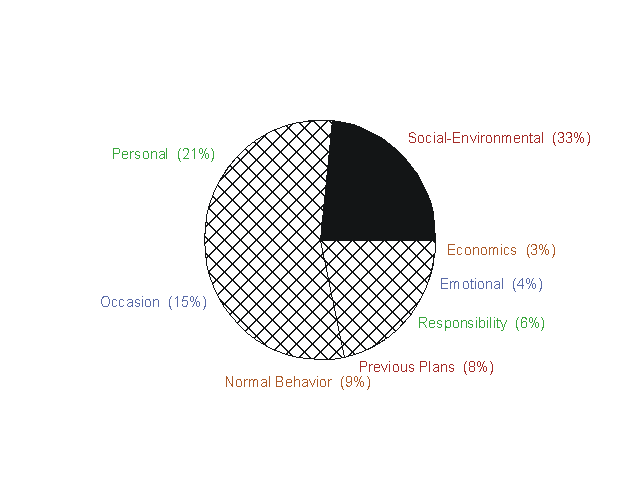















Traffic Tech #91: Why People Drink and Drive |
|---|
|

Number 91 April 1995
WHY PEOPLE DRINK AND DRIVE
STUDY LOOKS AT DECISIONS THAT LEAD TO IMPAIRED DRIVING
Very few people set out to drive while impaired by alcohol. Rather, alcohol impaired driving results from a combination of decisions about drinking and decisions about driving. The sequence of these decisions brings the two acts together in place and time. A study recently completed by the National Public Services Research Institute looked at the decisions people made to drink and drive.
Some of the most critical decisions occur early in the series. These include decisions about taking part in events where drinking will occur and transpor-tation to get to the event. Decisions made at this point can lead to conditions that make alcohol impaired driving a virtual certainty. As a result, many current countermeasures do not work. For example, encouraging social hosts to control guests' drinking may prove futile where celebrations create expectations of overindulgence. Efforts to combat alcohol impaired driving must address the range of conditions that influence drinking and driving decisions if they are going to be successful.
The study team interviewed almost 600 people who admitted driving a vehicle while impaired by alcohol. They described in detail the series of decisions leading up to their most recent occurrence of driving while impaired.
Decisions
In a 45 minute interview, each drinker described decisions involving:
Major Categories of Decisions that Lead to Impaired Driving

For example, Social and Environmental Influences were the largest category leading to alcohol impaired driving. These influences accounted for one third of all the decisions, and came from friends and the situations they helped to create. Heavy drinking often arises in response to subtle overt encouragement from friends. For example, hosts may give the impression that they expect over consumption and do not appreciate moderation. Or, friends may promote heavy drinking to feel more comfortable in their own over consumption. Prevention efforts to alter these influences might seek to redefine hospitality and sociability with less dependence upon alcohol as a social lubricant. And, promote the idea that friends don't encourage friends to drive drunk.
The study found that the willingness to allow impaired friends to drive often arises from the need for a ride in the absence of an available designated driver. This can happen because the driver did not foresee the need for a designated driver in advance, there was no sober passenger present, or the other drinking passengers were unwilling to drive, even though less impaired. Some passengers are less concerned about their prospects of being injured as a passenger than about the possibility of being arrested as a drinking driver.
About one fifth of the decisions to drink and drive come from within the individual. These Personal Influences ranged from drinkers' need for relaxation to the desire to "get wasted." Often, the desire to maintain whatever feeling had already been achieved influenced decisions to keep on drinking. One of the chief influences upon the decision to drive impaired was simply a person's failure to recognize or admit that they were under the influence of alcohol.
Differences Among Subgroups
Significant differences appeared across subgroups of those interviewed. Students differed from older, employed drinkers. Students did more of their heavy drinking in large groups, to celebrate special occasions, and admitted to being more responsive to economic influences. Non students were more influenced by established, long term drinking patterns.
Gender differences were relatively small among the heavy drinkers. Women's drinking was affected more by social influences. Men's drinking was influenced more by the nature of the occasion.
Those in white collar occupations tended to drink heavily in response to social influences. Persons in blue collar jobs were more responsive to internal moods and feelings.
The differences among subgroups in decisions to drink and drive suggest that countermeasures will be more successful if they target specific decision influences and specific subgroups.
For a copy of Why People Drink and Drive: The Bases of Drinking and Driving Decisions (122 pages) contact: Office of Program Development and Evaluation, NHTSA, NTS-32, 400 Seventh Street, S.W. Washington, DC 20590 (202) 366-2752, or send a fax to (202) 366-7096, or e-mail ABERNING@NHTSA.DOT.GOV Amy Berning was the technical manager for this study.
U.S. Department of Transportation
National Highway
Traffic Safety
Administration
400 Seventh Street, S.W. NTS-33
Washington, DC 20590
Traffic Tech is a publication to disseminate information about traffic safety programs, including evaluations, innovative programs, and new publications. Feel free to copy it as you wish.
If you would like to receive a copy contact:
Linda Cosgrove, Ph.D., Editor,
Evaluation Staff Traffic Safety Programs
(202) 366-2759
